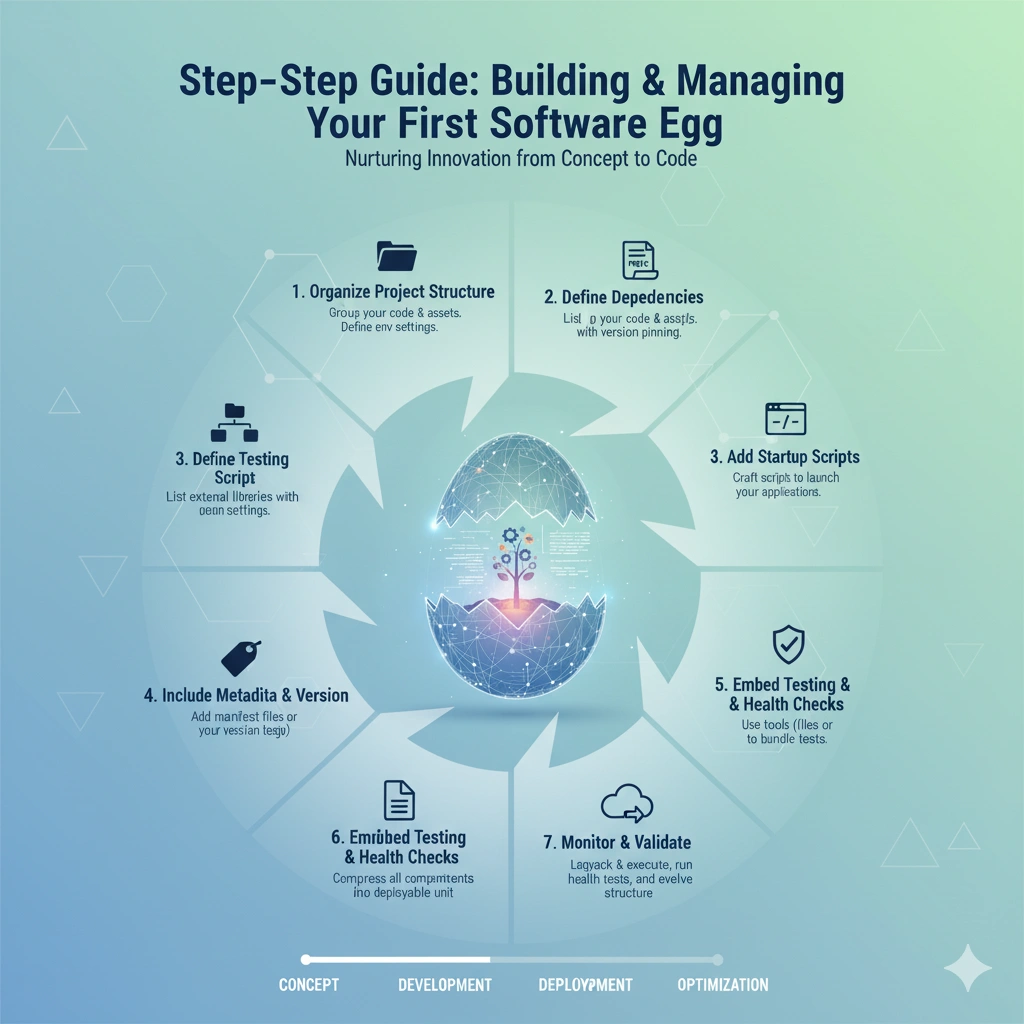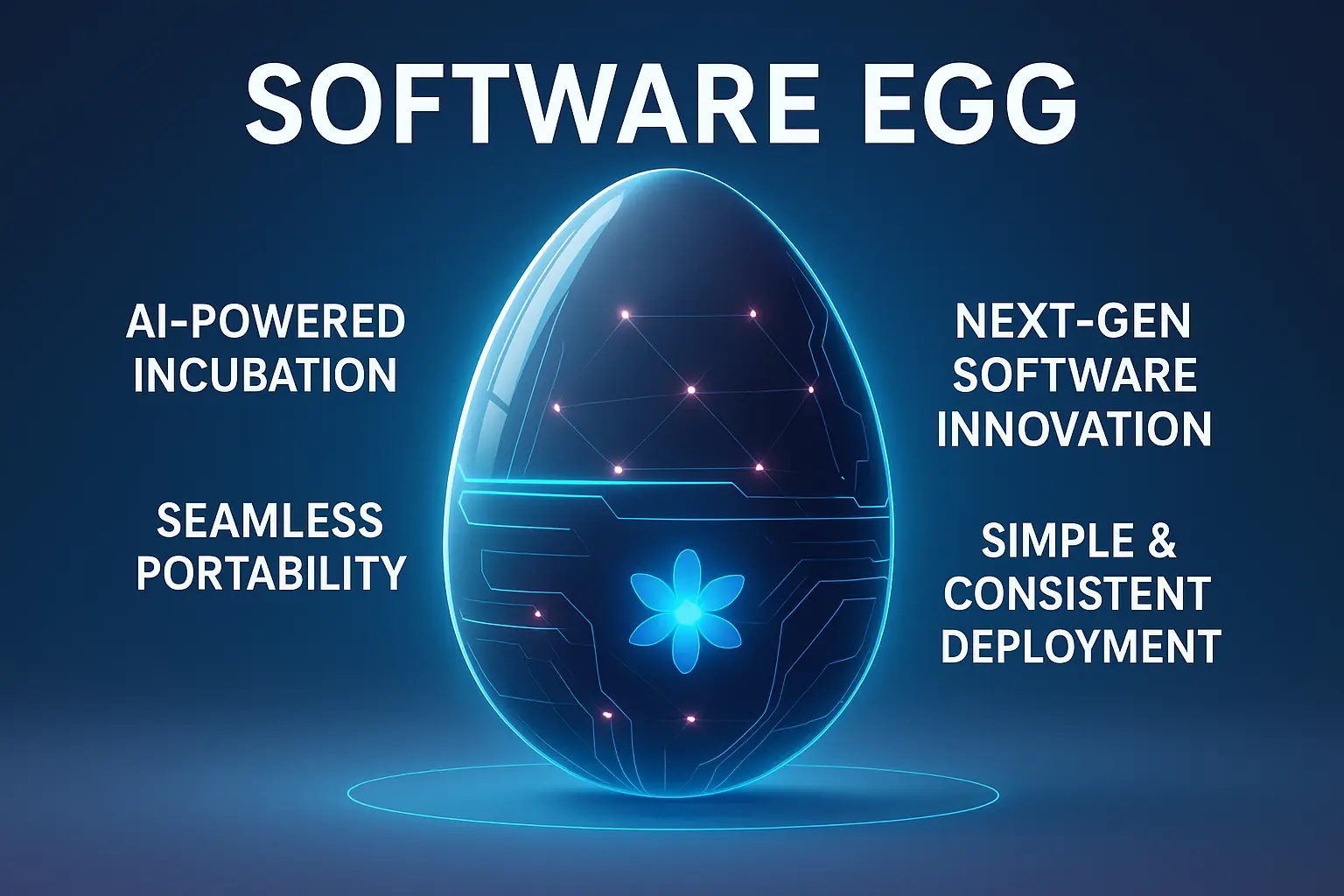If someone told you “software egg,” you might see images of breakfast or Easter surprises — but in the development world, this term has multiple layers. As you search, you’ll find a few interpretations floating around: one is the Python packaging format called “.egg,” which historically bundled Python modules with metadata. Another is the newer conceptual approach (popular in DevOps / CI circles) where a software component is packaged with all its dependencies and environment settings (somewhat like a container). Or, it could be a metaphorical “egg” containing everything the app needs to hatch in production.
In this article, we’ll untangle those meanings, focus on how modern developers are adapting the “egg” idea, and dig into why it’s showing up more frequently — especially among teams pushing for robust, portable software delivery. By the way — we’ll mention Software Egg explicitly early (as required) and tie that into modern packaging and deployment.
Two Faces of the Term: Python .egg vs. Deployment Egg
Python’s .egg Format (Legacy Packaging)
Back in the day, Python developers used .egg files as one way to distribute libraries and packages. It worked like a ZIP file with extra metadata — combining code, resources, and versioning information into a single bundle. The .egg could be a directory or compressed archive containing the EGG-INFO metadata folder. It allowed some flexibility, like conceivably having multiple versions side by side, though that feature was unstable. Over time, though, the Python community gravitated toward the wheel (.whl) format, which offers clearer specification, better compatibility, and more tooling support. In fact, the packaging authority documentation now considers .egg a deprecated format. So if you stumble upon legacy Python code mentioning eggs, that’s likely what it’s referring to.
The Conceptual Software Egg in DevOps / Deployment
In a more modern context, some teams borrow the “egg” metaphor to describe a self-contained deployable unit — not bound to a language or packaging format, but focused on portability, consistency, and environment bundling. This is closer to what Keploy’s blog refers to when it says a software egg “includes everything required to run the application, including libraries, configurations, scripts, and other dependencies.” Essentially, this “egg” is like a container (or mini-container) wrapped around your application plus all of its environment settings. The goal: you run it anywhere, and it behaves the same. So going forward in this article, unless we’re specifically talking about Python packaging history, when we say Software Egg, we’ll mean the deployable, environment-aware bundle that helps teams ship reliably across systems.
Why the “Egg” Idea Still Matters — More than Just a Metaphor
You might wonder — containers already exist (Docker, OCI images). Why resurrect this egg metaphor? What value does it bring? Here are a few reasons this concept is resonating:
- Simplicity in mental model. Calling it an “egg” reminds developers that everything essential is inside. No missing dependencies, no surprise mismatches.
- Lightweight bundling. You don’t need full container engines for every scenario. Some deployments benefit from more lightweight delivery (e.g. edge computing, function-as-a-service platforms).
- Testable and reproducible. When your egg includes not just runtime artifacts but also test harnesses (or mocks), you can validate that your packaged code works in every environment.
- Bridging legacy systems. Some infrastructures can’t use full containers but can launch packaged artifacts. A “Software Egg” allows you to bring container-like consistency without reinventing the infrastructure.
- Modular deployment at micro-level. Rather than shipping large monolithic containers, you may break your system into micro-eggs (each module carries its own dependencies). This can ease updates and reduce coupling.
All that said, deploying, scaling, and securing many eggs introduces its own challenges — we’ll talk about those later.
Inside a Modern Software Egg: Anatomy & Components
Let’s peel back the shell and see what goes into a well-architected software egg:
| Component | Purpose inside the egg |
|---|---|
| Core Application Code | Your business logic, modules, controllers, etc. |
| External Dependencies | Libraries, frameworks, plugins that your app needs |
| Configuration & Environment Variables | Settings for dev, test, staging, production |
| Execution / Launch Scripts | Scripts to initialize, run, or orchestrate startup |
| Metadata / Versioning | Version info, release notes, identifiers |
| Optional Test Artifacts | Mocks, regression tests, staging data for validation |
| Monitoring / Telemetry Hooks | Metrics or instrumentation built into the package |
| The idea is: every environment (your laptop, staging server, cloud instance) receives the same egg, so behavior is consistent. No more “works on my machine” surprises. Because this model is language-agnostic, you can build software eggs in Node.js, Java, Go, Python, or any other tech stack. The pattern is more important than the implementation. |
How Tools Like Keploy Help with Software Egg Creation
One of the biggest issues in deployment is mismatch — what passes in staging fails in production. That’s where testing becomes critical. Keploy is an AI-driven tool that helps with generating real-world test cases, mocks, and integrating them into CI/CD pipelines. Key capabilities:
- Capture real interactions (like API requests) automatically during runtime.
- Convert those interactions into automated tests or mocks, bundled with your egg.
- Integrate with your CI/CD pipeline, so each time you build or deploy, your egg is validated before it travels forward.
- Self-update test cases as your application evolves, reducing test maintenance headaches.
In short: Keploy helps your egg not only travel but also verify itself as it lands in new environments. You don’t just ship software — you ship confidence.
How Modern Software Eggs Improve Development & Deployment
Let’s explore how adopting this “egg” methodology refines workflows, speeds delivery, and increases reliability.
1. Predictable Environments Across Stages
One of the biggest pain points in dev teams is environment drift — what works in dev doesn’t in QA, doesn’t in staging, doesn’t in prod. Eggs eliminate that by compressing every essential element into one bundle.
2. Easy Rollbacks & Versioning
Because eggs are versioned and self-contained, rolling back to a prior version is simpler: deploy the previous egg, test it, and you’re back in business — no missing dependencies or manual fixes.
3. Parallel Micro-Deployments
In microservices architectures, each service can ship its own egg. You decouple releases — one service evolves independently without dragging the whole system. Easier updates, fewer collisions.
4. Faster Onboarding & Environment Setup
New developers (or CI machines) just need to grab your egg and run it. No hours lost installing libraries, resolving mismatches, or battling incompatible versions.
5. Built-in Testing & Validation
Because test artifacts can be bundled inside the egg (via tools like Keploy), every deployment is also validated. The “egg hatches” only if it passes its own health checks.
Use Cases: Where Software Eggs Shine
Here are real-world scenarios where the software egg approach makes a difference:
- Continuous Integration / Deployment Pipelines
In pipelines, you build your egg once, test it, and deploy it across environments without rebuilding at each stage. - Microservices / Modular Systems
Each microservice is its own egg, letting teams deploy independently, scale differently, and maintain version isolation. - Edge / IoT Deployments
When distributing to devices with limited compute or connectivity, delivering a compact, self-contained egg is more efficient than a full container stack. - Experimental / Side Projects
Projects that spin up and down, or proof-of-concepts, benefit from the agility an egg offers — minimal overhead, quick boot, consistent behavior. - Legacy Integration Layers
When integrating new services into older infrastructure (that doesn’t support heavy container orchestration), eggs can give you consistency without rewriting the platform.
Challenges, Pitfalls & Mitigations
As with any pattern, software eggs aren’t magic. You’ll face obstacles. Knowing them ahead keeps you grounded.
1. Managing Many Eggs at Scale
If a system has dozens or hundreds of eggs, orchestration, monitoring, and version coordination becomes non-trivial.
Mitigation: Use orchestration tools (Kubernetes, serverless managers) or service meshes to manage eggs logically.
2. Security Risks within Bundled Dependencies
Packaging all dependencies means more surface area for vulnerabilities. A single outdated library inside an egg is a risk.
Mitigation: Automate vulnerability scanning during your build stage, and keep each egg’s dependencies minimal.
3. Binary / Native Dependency Complexity
If your app depends on native libraries or platform-specific binaries, bundling those for multiple platforms becomes tricky.
Mitigation: Use platform-specific eggs or build separate eggs per target architecture.
4. Legacy or Rigid Infrastructure Compatibility
Some legacy platforms may not support your egg format or runtime expectations.
Mitigation: Build fallback wrappers or shims to run eggs in “compatibility mode.” Provide adapters.
5. Testing Complexity Over Time
If test suites or mocks are tightly coupled to the egg, evolving features may break tests, requiring maintenance overhead.
Mitigation: Maintain test abstraction layers, version control mocks, and allow for selective disabling of flaky tests.
Step-by-Step Guide: Building & Managing Your First Software Egg

Here’s a human-friendly, language-agnostic plan for creating your first deployable egg.
- Organize Your Project Structure
Group your code, assets, configuration folders logically. Decide how different environments will override settings (dev vs prod). - Define Dependencies Explicitly
Use a manifest file (e.g.requirements.txt,package.json,go.mod) to list external libraries with version pinning. - Add Execution / Startup Scripts
Craft shell scripts, CLI wrappers, or orchestrators that know how to launch your application in a clean environment. - Include Metadata & Version Info
Add manifest files or version tags so you (and tools) know what version of the egg you’re dealing with. - Embed Testing & Health Checks
Use testing tools (like Keploy) to bundle validation tests or mocks. For example, record API flows in a staging run and convert them into test assertions. - Package & Archive
Use a zip, tar, or custom packaging utility to compress all components into a single deployable unit. - Deploy & Validate
On the target environment, unpack or execute your egg, run included health tests, check logs, verify endpoints. - Monitor & Iterate
Log metrics, catch errors, and evolve your egg structure as you learn what works and what needs adjustment.
Over time, you might automate these steps (CI/CD, build pipelines, automatic egg versioning) to make the process seamless.
Future Trends: Where Eggs Are Heading
While containers are kingdom for now, here’s how the egg metaphor or hybrid approaches might evolve:
- AI-driven egg generation — Tools automatically detect dependencies, generate startup scripts, and embed tests without manual configuration.
- Cloud provider-native egg execution — Instead of containers, some serverless or edge platforms might accept eggs directly.
- Hybrid eggs + containers — An egg could wrap around a container, providing extra abstraction or versioning control.
- Edge / IoT-first design — As computing shifts to devices and sensors, lightweight eggs may replace full container stacks on small devices.
- Standardization and registry support — Just like PyPI or Docker Registry, we may see “egg registries” or standards to host and version eggs.
Conclusion
“Software Egg” is no longer a quirky metaphor — it’s a practical concept blending portability, reproducibility, and ease of deployment. Whether you’re using Python, Node, Go, or Java, bundling your app, environment, and validation into one deployable unit has major benefits. By understanding its roots in Python’s .egg format, embracing modern deployment patterns, and leveraging tools like Keploy, teams can ship software with confidence and consistency
FAQs
Q1. Is Software Egg just another name for a container?
Not exactly. A Software Egg is more lightweight and conceptually focused: bundling your app + dependencies + environment settings. Containers are broader, with orchestration, runtime isolation, and platform dependencies.
Q2. Can I build a Software Egg for any programming language?
Yes. The pattern is language-agnostic. Whether you code in Python, JavaScript, Go, or Java, you can create an “egg” by bundling your components and environment setup.
Q3. Do I have to package tests within the egg?
No, but it’s highly beneficial. Bundling tests or mocks ensures your deployment verifies itself. Tools like Keploy automate that step.
Q4. How is this different from Docker + images?
Eggs are lighter and more portable in scenarios where full container stacks are overkill. They’re about reproducibility and simplicity rather than full container isolation.
Q5. Does this approach scale to large systems?
Yes, but with care. Managing many eggs requires orchestration, monitoring, and version control. Use tooling (Kubernetes, service meshes) and strong automation.

